Hues of brown and gray predominate in the winter garden, so a peek of green now and then is most welcome. Evergreen candytuft is a perennial — technically a woody subshrub — that maintains its neat, low mound of dark, glossy green foliage throughout the year. There are a number of cultivars to choose from to suit your needs: ‘Little Gem’ and ‘Kingwood Compact’ are smaller forms, ‘Autumn Snow’ and ‘Autumnale’ will rebloom in the fall, and ‘Snowflake’ grows up to 3 feet in diameter.

Jocelyn H. Chilvers
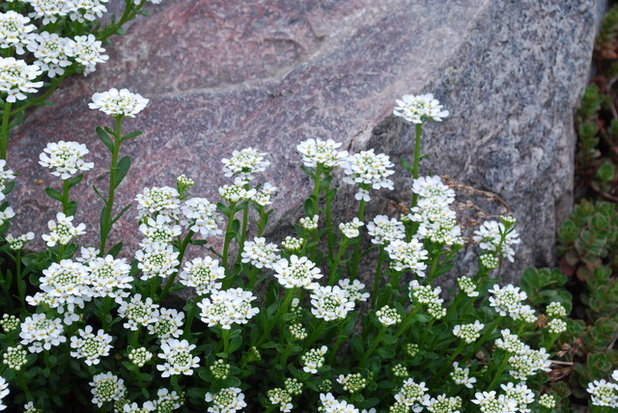
Jocelyn H. Chilvers
Botanical name: Iberis sempervirensCommon name: Evergreen candytuft
Origin: Southern Europe
Where it will grow: Hardy to -30 degrees (USDA zones 4 to 8; find your zone)
Elevation range: Up to 8,000 feet
Water requirement: Moderate to low once established
Light requirement: Full sun
Mature size: 10 to 12 inches tall and 18 to 24 inches wide
Benefits and tolerances: Candytuft provides a mass of sparkling white flowers for up to six weeks on a low, mounding form of glossy, evergreen foliage; tolerates rabbits, deer, alkaline soil and drought.
Seasonal interest: Flowers in midspring; green foliage year-round
When to plant: Spring or fall
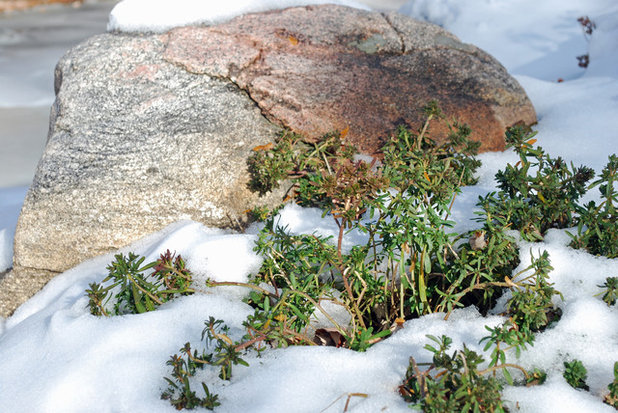
Jocelyn H. Chilvers
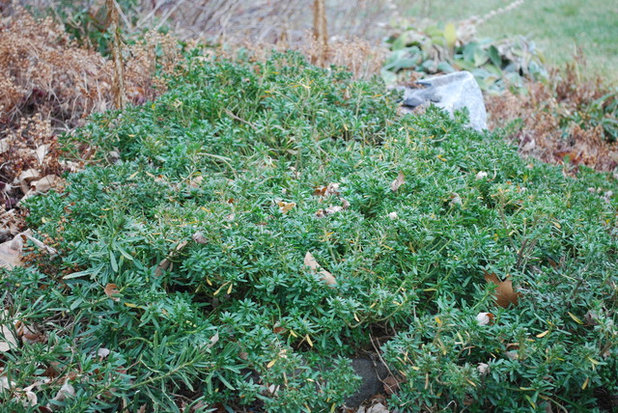
Jocelyn H. Chilvers
Distinguishing traits. Evergreen candytuft features narrow, leathery, dark green foliage up to 1 inch long. Clusters of simple white flowers blanket the plant in midspring.
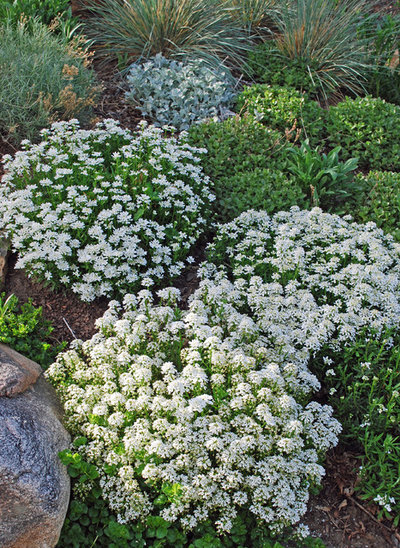
Jocelyn H. Chilvers
How to use it. As a foreground plant edging a planting bed, tumbling between boulders in the rock garden or as a small-scale ground cover.
For companion plants look for contrasting large leaf textures or color.
Bright Edge yucca (
Yucca filamentosa ‘Bright Edge’, zones 4 to 9),
Big Ears lamb’s ear (
Stachys byzantina ‘Big Ears’, zones 4 to 9) and
bearded iris (
Iris germanica, zones 4 to 9) would all be good companions.
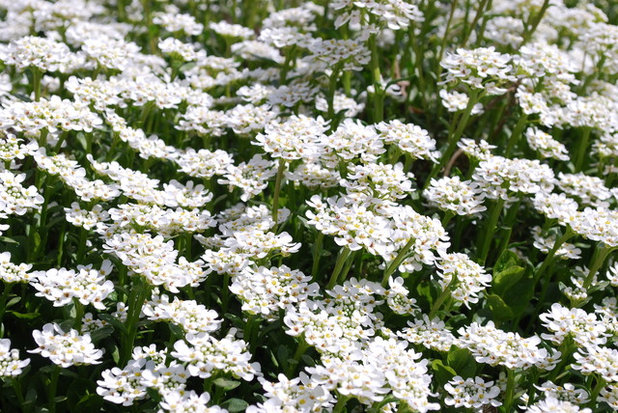
Jocelyn H. Chilvers
Planting notes. Provide average to lean, well-drained soil. Wet soil, particularly in winter, may cause crown rot. Although it’s tolerant of partial shade, plant evergreen candytuft in full sun for the best flower production.
Tip: Candytuft is a subshrub with a woody base — shear plants back by one-third after flowering to keep them neat and encourage compact growth. Winter desiccation and sun scorching may be a problem in colder climates where snow cover is intermittent; a light mulch of evergreen boughs will provide some protection.
More: What to do in your garden by region





